What is slip disc treatment. Slipped Disc Treatment: Comprehensive Guide to Herniated Disk Diagnosis and Non-Surgical Options
What are the non-surgical treatment options for a slipped disc? Discover the latest insights on managing a herniated disk, from exercise and relaxation techniques to medication and physical therapy.
Understanding Slipped Discs: An Overview
Slipped discs, also known as herniated discs, are a common spinal condition that can cause significant pain and discomfort. This condition occurs when the soft, gel-like inner portion of a spinal disc (the nucleus pulposus) protrudes through the outer, tougher layer (the annulus fibrosus), putting pressure on the surrounding nerves.
Most slipped discs occur in the lower back (lumbar region), though they can also affect the neck (cervical region) and middle back (thoracic region). While some slipped discs may not cause any symptoms, others can lead to severe back pain, radiating leg pain (sciatica), and other neurological symptoms.
Non-Surgical Treatment Options
Fortunately, the majority of people with a slipped disc can be treated without surgery. The primary goal of non-surgical treatment is to reduce pain, improve mobility, and allow the disc to heal naturally. Some of the most common non-surgical treatment options include:

Exercise, Relaxation, and Positioning
Contrary to past recommendations, modern treatment approaches encourage patients to stay active rather than bed rest. Studies have shown that physical activity can improve mobility, while prolonged inactivity can actually weaken muscles and bones, leading to additional problems.
Relaxation exercises, such as the “psoas” position (lying on your back with your legs elevated on a platform), can also help alleviate severe back pain. However, it’s important not to remain inactive for too long, as this can have negative consequences.
Medication
A variety of medications can be used to manage the pain and inflammation associated with a slipped disc. These include:
- Non-steroidal anti-inflammatory drugs (NSAIDs): Drugs like ibuprofen, naproxen, and diclofenac can provide pain relief and reduce inflammation.
- Acetaminophen (paracetamol): This medication can be used as an alternative to NSAIDs, especially for individuals who cannot tolerate them due to conditions like stomach problems or asthma.
- Opioids: Stronger painkillers like morphine and tramadol may be prescribed for severe pain, but they must be used under medical supervision due to the risk of side effects and potential for addiction.
Manual and Physical Therapy
Healthcare professionals may recommend various manual and physical therapy techniques to help manage a slipped disc, including:

- Spinal manipulation: Performed by chiropractors or osteopathic doctors, this technique involves applying controlled force to specific joints in the spine to improve mobility and reduce pain.
- Physiotherapy: Physical therapists can design customized exercise programs to strengthen the core, improve flexibility, and promote healing.
- Other modalities: Additional treatments like heat/cold therapy, massage, and transcutaneous electrical nerve stimulation (TENS) may also be used to alleviate symptoms.
Recovery and Preventing Recurrence
Most people with a slipped disc will recover within six weeks without any treatment. However, it’s important to follow the recommended treatment plan and gradually resume normal activities to prevent the condition from recurring.
Maintaining a healthy lifestyle, including regular exercise, proper posture, and weight management, can also help minimize the risk of future slipped disc episodes.
When to Consider Surgery
While the majority of slipped discs can be managed non-surgically, some cases may require surgical intervention. Factors that may indicate the need for surgery include:

- Severe, persistent pain that does not respond to conservative treatment
- Progressive neurological symptoms, such as muscle weakness or numbness in the legs
- Cauda equina syndrome, a rare but serious condition involving loss of bladder or bowel control
In these cases, surgery may be recommended to remove the protruding disc material or stabilize the spine. However, non-surgical treatment remains the primary approach for most patients with slipped discs.
Conclusion
Slipped discs are a common spinal condition that can be effectively managed through various non-surgical treatment options. By staying active, using medication to manage pain and inflammation, and incorporating physical therapy, most people with a slipped disc can achieve a full recovery within a matter of weeks. However, in some cases, surgery may be necessary to address severe or persistent symptoms.
If you are experiencing symptoms of a slipped disc, it’s important to consult with a healthcare professional to develop a comprehensive treatment plan tailored to your individual needs. With the right approach, you can alleviate your pain and get back to your normal activities.

Slipped disc: Non-surgical treatment options – InformedHealth.org
Last Update: April 9, 2020; Next update: 2023.
Most people with a slipped disc in the lumbar region of their spine (lower back) are offered “conservative” treatment, meaning that the treatment does not involve surgery. This mainly involves exercise, relaxation and positioning, painkillers or local anesthetics, and manual and physical therapy.
Some slipped discs don’t cause any symptoms, whereas others lead to severe back pain. A slipped disc in the lumbar region of the spine (the lower back) can press on the sciatic nerve and cause pain that often radiates down one leg and into the foot. Most people recover from a slipped disc within six weeks without treatment. Until then there are a number of treatment options that aim to help relieve the pain and improve mobility.
Exercise, relaxation and positioning
In the past, people who had a slipped disc were typically advised to stay in bed for one to two weeks. Nowadays the opposite approach is taken: people are advised to stay active instead. This is because remaining in a lying position for a long time can make muscles and bones weaker, which can end up causing other problems.
Nowadays the opposite approach is taken: people are advised to stay active instead. This is because remaining in a lying position for a long time can make muscles and bones weaker, which can end up causing other problems.
Studies have shown that physical activity can improve mobility. However, whether people keep up with exercise or rest instead wasn’t found to influence the back pain itself. So it is a good idea to try to carry out your normal daily activities as much as the pain allows. Exercise has also been proven to effectively prevent back pain from returning.
Relaxation exercises may also be worth a try to help relieve back pain. How you perceive pain and how well you cope with it can be influenced by your mind.
If the pain is very severe, though, there is sometimes simply no other way to deal with it than to lie down and find a position that puts as little strain on your back as possible. Many people find the “psoas” position comfortable: While lying on your back, you put your lower legs on a raised platform high enough so that your knees are bent at a 90-degree angle. But it is important not to stay inactive for too long.
But it is important not to stay inactive for too long.
Psoas position
Medication for the pain
There are a number of different medications for the relief of sciatic nerve pain (sciatica) caused by a slipped disc. Most of these are painkillers, but you can also use muscle relaxants and anti-inflammatory drugs. The following medications are the most commonly used. They are all available without a prescription when taken at a low dose:
Non-steroidal anti-inflammatory drugs (NSAIDs): These painkillers belong to the same group of drugs as acetylsalicylic acid (ASA, the drug in medicines like “Aspirin”). NSAIDs that may be an option for the treatment of sciatica include diclofenac, ibuprofen and naproxen. They have a pain-relieving and anti-inflammatory effect.Because NSAIDs prevent blood from clotting to an extent, they can cause bleeding. The bleeding may be mild, such as a nosebleed or bleeding gums, but more serious bleeding can sometimes also occur, for example in the stomach or bowels.
 In some cases NSAIDs cause stomach ulcers, too. NSAIDs may also impair the function of the kidneys. If you have asthma, a cardiovascular disease, or a stomach ulcer, you should ask your doctor for advice before taking NSAIDs. NSAIDs can also be injected into muscle tissue, although that is generally not done anymore nowadays. NSAID injections probably don’t have any advantages over tablets or suppositories, but they may cause nerve damage, bleeding or inflammation at the site of injection.
In some cases NSAIDs cause stomach ulcers, too. NSAIDs may also impair the function of the kidneys. If you have asthma, a cardiovascular disease, or a stomach ulcer, you should ask your doctor for advice before taking NSAIDs. NSAIDs can also be injected into muscle tissue, although that is generally not done anymore nowadays. NSAID injections probably don’t have any advantages over tablets or suppositories, but they may cause nerve damage, bleeding or inflammation at the site of injection.Acetaminophen (paracetamol): Acetaminophen (paracetamol) is also a painkiller, but it is not an NSAID. It is well tolerated and can be used as an alternative to NSAIDs – especially for people who do not tolerate NSAID painkillers because of things like stomach problems or asthma. But higher doses of acetaminophen can cause liver and kidney damage. For this reason, adults should follow the information on the package insert and make sure they do not take more than 4 grams (4,000 milligrams) of acetaminophen per day.
 This is the amount in, for example, 8 tablets containing 500 milligrams each. It is not only important to take the right dose, but also to wait long enough between doses.
This is the amount in, for example, 8 tablets containing 500 milligrams each. It is not only important to take the right dose, but also to wait long enough between doses.
Some of the medication options have to be prescribed by a doctor. These include:
Opioids: Strong painkillers that may only be used under medical supervision. Opioids are available in many different strengths, and some are available in the form of a patch. Morphine, for example, is a very strong drug, while tramadol is a weaker opioid. These drugs may have a number of different side effects, some of which are serious. They range from nausea, vomiting and constipation to dizziness, breathing problems and blood pressure fluctuation. Taking these drugs for a longer time can lead to habitual use and physical dependence.
Steroids: Inflammation-reducing drugs that can be used to treat various diseases systemically. It is called a systemic treatment if the medication spreads throughout the entire body.
 This happens when it is taken as a tablet, injected into a muscle or given through a drip (infusion).Systemic steroids can soothe inflammation and relieve pain. They can also increase the risk of certain medical problems, including stomach ulcers, osteoporosis, infections, skin problems, glaucoma and glucose metabolism disorders.
This happens when it is taken as a tablet, injected into a muscle or given through a drip (infusion).Systemic steroids can soothe inflammation and relieve pain. They can also increase the risk of certain medical problems, including stomach ulcers, osteoporosis, infections, skin problems, glaucoma and glucose metabolism disorders.Muscle relaxants: Sedatives that also relax the muscles. Like other psychotropic medications, they can cause fatigue and drowsiness, and affect your ability to drive. Muscle relaxants can also affect the functioning of your liver and cause gastrointestinal (stomach and bowel) complications. Benzodiazepines such as tetrazepam may lead to dependency if they are taken for longer than two weeks.
Anticonvulsants: These medications are typically used to treat epilepsy, but some are approved for treating nerve pain (neuralgia). Their side effects include drowsiness and fatigue. This can affect your ability to drive.
Antidepressants: These drugs are usually used for treating depression.
 Some of them are also approved for the treatment of pain. Possible side effects include nausea, dry mouth, low blood pressure, irregular heartbeat and fatigue.
Some of them are also approved for the treatment of pain. Possible side effects include nausea, dry mouth, low blood pressure, irregular heartbeat and fatigue.
Anticonvulsants and antidepressants are typically not used unless the symptoms last for a longer period of time or the painkillers don’t provide enough relief.
Manual therapy and treatments based on physical stimuli
The treatment options for sciatica following a slipped disc also include manual therapy and treatments based on physical stimuli. Manual treatment may include massages and special techniques for relaxing tense muscles or locked joints. Treatments based on physical stimuli use warming and cooling methods to relieve pain. These treatments are also called passive therapies because patients don’t have to actively participate. Common treatments include:
Massages: Various massage techniques are used to relax muscles and ease tension.
Heating and cooling: This includes the use of hot packs and heating patches, a hot bath, going to the sauna or using an infrared lamp.
 Heat can also help relax tense muscles. Cold packs, like cold wraps or gel packs, are also used to help soothe irritated nerves.
Heat can also help relax tense muscles. Cold packs, like cold wraps or gel packs, are also used to help soothe irritated nerves.Ultrasound therapy: Here the lower back is treated with sound waves. The small vibrations that are produced generate heat and relax the body tissue.
There is no overall proof that passive treatments speed up recovery from a slipped disc or relieve the pain especially well. But many people find that heat or massages are pleasant and relaxing.
Traditional Asian medicine
Treatment approaches based on traditional Asian medicine include:
Acupuncture: In ´´acupuncture the therapist inserts fine needles into certain points on the body. This is thought to relieve the pain..
Reiki: Reiki is a Japanese treatment which aims to relieve pain by using specific hand placements.
Moxibustion: This method is used to heat specific points on the body by placing heated needles or glowing sticks made of mugwort (“Moxa”) close to those points.

There are very few good-quality studies on these treatments, and there is no proof that they help to relieve pain. Acupuncture is the only approach for which there is weak evidence that it might relieve pain – although this relief has been shown to be unrelated to where the needles are placed on the body.
Injections near the spine
Injection therapy mainly uses local anesthetics and/or inflammation-reducing medications like steroids. These drugs are injected into the area immediately surrounding the affected nerve root. There are different ways of doing this:
In lumbar spinal nerve analgesia, the medication is injected directly at the point where the nerve root leaves the spinal canal. This has a numbing effect on the nerve root.
In lumbar epidural analgesia, the medication is injected into what is known as the epidural space (“epidural injection”). The epidural space surrounds the spinal cord and the spinal fluid in the spinal canal.
 This is also where the nerve roots are located. During this treatment the spine is monitored using computer tomography or x-rays to make sure that the injection is placed at exactly the right spot.
This is also where the nerve roots are located. During this treatment the spine is monitored using computer tomography or x-rays to make sure that the injection is placed at exactly the right spot.
Injections close to the spine can have side effects such as bleeding, infection and nerve damage. A treatment involving injections over a longer period of time may also lead to muscle weakness and is associated with radiation exposure due to the use of x-rays. For this reason, only a limited number of injections may be given. It is important to carefully weigh the pros and cons of having multiple injections.
Studies on treatments with injections have shown that they are able to relieve sciatica for several weeks. People were able to move more easily while going about their day-to-day activities as a result. Steroid injections seem to be somewhat more effective than other types of injections.
Treating pain and staying active
Acute low back pain usually has no clear cause and goes away on its own after a few days. And even if a slipped disc is causing it, your body will probably be able to make the problem go away on its own within six weeks. Most treatments hardly affect the speed of recovery. Hot packs or massages might help you feel better. If you have severe pain, short-term relief can be provided by getting into a position that reduces the strain on your back and by using anti-inflammatory drugs or local anesthetics. But most of the work is usually done by the body itself.
And even if a slipped disc is causing it, your body will probably be able to make the problem go away on its own within six weeks. Most treatments hardly affect the speed of recovery. Hot packs or massages might help you feel better. If you have severe pain, short-term relief can be provided by getting into a position that reduces the strain on your back and by using anti-inflammatory drugs or local anesthetics. But most of the work is usually done by the body itself.
If slipped disc symptoms persist for a longer time, surgery may be an option to try to relieve the pressure on the affected nerve. However, most experts believe that slipped disc surgery is done more often in Germany than is actually necessary. So it might make sense to get a second opinion if your doctor advises you to have surgery and you aren’t sure whether this is the right treatment.
It is particularly important to stay as physically active as possible despite the pain. Exercise will not only keep your body in shape, it generally also has a positive effect on your mood. Getting enough exercise and keeping up the strength of your torso (core muscles) is key in order to stop back pain from becoming chronic. Physical activity has been scientifically proven to have a preventive effect – and it is probably the most important thing you can do to help yourself.
Getting enough exercise and keeping up the strength of your torso (core muscles) is key in order to stop back pain from becoming chronic. Physical activity has been scientifically proven to have a preventive effect – and it is probably the most important thing you can do to help yourself.
Sources
Bhatia A, Flamer D, Shah PS, Cohen SP. Transforaminal Epidural Steroid Injections for Treating Lumbosacral Radicular Pain from Herniated Intervertebral Discs: A Systematic Review and Meta-Analysis. Anesth Analg 2016; 122(3): 857-870. [PubMed: 26891397]
Bundesärztekammer (BÄK), Kassenärztliche Bundesvereinigung (KBV), Arbeitsgemeinschaft der Wissenschaftlichen Medizinischen Fachgesellschaften (AWMF). Nationale Versorgungsleitlinie Nicht-spezifischer Kreuzschmerz. Langfassung. AWMF-Registernr.: nvl-007. 2017.
Jordan J, Konstantinou K, O’Dowd J. Herniated lumbar disc. BMJ Clin Evid 2011: pii: 1118.
Lee JH, Kim DH, Kim DH, Shin KH, Park SJ, Lee GJ et al.
 Comparison of Clinical Efficacy of Epidural Injection With or Without Steroid in Lumbosacral Disc Herniation: A Systematic Review and Meta-analysis. Pain Physician 2018; 21(5): 449-468. [PubMed: 30282390]
Comparison of Clinical Efficacy of Epidural Injection With or Without Steroid in Lumbosacral Disc Herniation: A Systematic Review and Meta-analysis. Pain Physician 2018; 21(5): 449-468. [PubMed: 30282390]Lewis R, Williams N, Matar HE, Din N, Fitzsimmons D, Phillips C et al. The clinical effectiveness and cost-effectiveness of management strategies for sciatica: systematic review and economic model. Health Technol Assess 2011; 15(39): 1-578. [PMC free article: PMC4781007] [PubMed: 22078311]
Li X, Han Y, Cui J, Yuan P, Di Z, Li L. Efficacy of Warm Needle Moxibustion on Lumbar Disc Herniation: A Meta-Analysis. J Evid Based Complementary Altern Med 2016; 21(4): 311-319. [PubMed: 26378088]
Pinto RZ, Maher CG, Ferreira ML, Ferreira PH, Hancock M, Oliveira VC et al. Drugs for relief of pain in patients with sciatica: systematic review and meta-analysis. BMJ 2012; 344: e497. [PMC free article: PMC3278391] [PubMed: 22331277]
Qin Z, Liu X, Wu J, Zhai Y, Liu Z.
 Effectiveness of Acupuncture for Treating Sciatica: A Systematic Review and Meta-Analysis. Evid Based Complement Alternat Med 2015: Article ID 425108. [PMC free article: PMC4631886] [PubMed: 26576192]
Effectiveness of Acupuncture for Treating Sciatica: A Systematic Review and Meta-Analysis. Evid Based Complement Alternat Med 2015: Article ID 425108. [PMC free article: PMC4631886] [PubMed: 26576192]Rasmussen-Barr E, Held U, Grooten WJ, Roelofs PD, Koes BW, van Tulder MW et al. Nonsteroidal Anti-inflammatory Drugs for Sciatica: An Updated Cochrane Review. Spine 2017; 42(8): 586-594. [PubMed: 28399072]
Rasmussen-Barr E, Held U, Grooten WJ, Roelofs PD, Koes BW, van Tulder MW et al. Non-steroidal anti-inflammatory drugs for sciatica. Cochrane Database Syst Rev 2016; (10): CD012382. [PMC free article: PMC6461200] [PubMed: 27743405]
Rubinstein SM, de Zoete A, van Middelkoop M, Assendelft WJ, de Boer MR, van Tulder MW. Benefits and harms of spinal manipulative therapy for the treatment of chronic low back pain: systematic review and meta-analysis of randomised controlled trials. BMJ 2019; 364: l689. [PMC free article: PMC6396088] [PubMed: 30867144]
Tang S, Mo Z, Zhang R.
 Acupuncture for lumbar disc herniation: a systematic review and meta-analysis. Acupunct Med 2018; 36(2): 62-70. [PubMed: 29496679]
Acupuncture for lumbar disc herniation: a systematic review and meta-analysis. Acupunct Med 2018; 36(2): 62-70. [PubMed: 29496679]IQWiG health information is written with the aim of helping
people understand the advantages and disadvantages of the main treatment options and health
care services.Because IQWiG is a German institute, some of the information provided here is specific to the
German health care system. The suitability of any of the described options in an individual
case can be determined by talking to a doctor. We do not offer individual consultations.Our information is based on the results of good-quality studies. It is written by a
team of
health care professionals, scientists and editors, and reviewed by external experts. You can
find a detailed description of how our health information is produced and updated in
our methods.
Slipped disc: Non-surgical treatment options – InformedHealth.org
Last Update: April 9, 2020; Next update: 2023.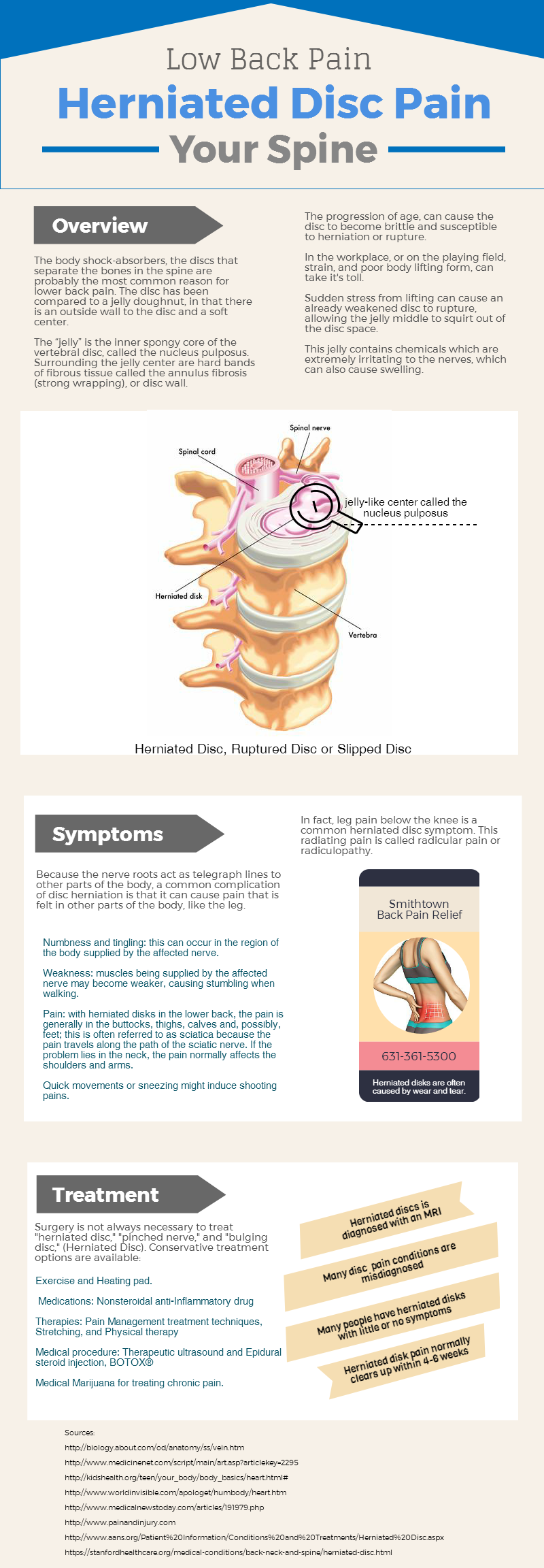
Most people with a slipped disc in the lumbar region of their spine (lower back) are offered “conservative” treatment, meaning that the treatment does not involve surgery. This mainly involves exercise, relaxation and positioning, painkillers or local anesthetics, and manual and physical therapy.
Some slipped discs don’t cause any symptoms, whereas others lead to severe back pain. A slipped disc in the lumbar region of the spine (the lower back) can press on the sciatic nerve and cause pain that often radiates down one leg and into the foot. Most people recover from a slipped disc within six weeks without treatment. Until then there are a number of treatment options that aim to help relieve the pain and improve mobility.
Exercise, relaxation and positioning
In the past, people who had a slipped disc were typically advised to stay in bed for one to two weeks. Nowadays the opposite approach is taken: people are advised to stay active instead. This is because remaining in a lying position for a long time can make muscles and bones weaker, which can end up causing other problems.
Studies have shown that physical activity can improve mobility. However, whether people keep up with exercise or rest instead wasn’t found to influence the back pain itself. So it is a good idea to try to carry out your normal daily activities as much as the pain allows. Exercise has also been proven to effectively prevent back pain from returning.
Relaxation exercises may also be worth a try to help relieve back pain. How you perceive pain and how well you cope with it can be influenced by your mind.
If the pain is very severe, though, there is sometimes simply no other way to deal with it than to lie down and find a position that puts as little strain on your back as possible. Many people find the “psoas” position comfortable: While lying on your back, you put your lower legs on a raised platform high enough so that your knees are bent at a 90-degree angle. But it is important not to stay inactive for too long.
Psoas position
Medication for the pain
There are a number of different medications for the relief of sciatic nerve pain (sciatica) caused by a slipped disc. Most of these are painkillers, but you can also use muscle relaxants and anti-inflammatory drugs. The following medications are the most commonly used. They are all available without a prescription when taken at a low dose:
Most of these are painkillers, but you can also use muscle relaxants and anti-inflammatory drugs. The following medications are the most commonly used. They are all available without a prescription when taken at a low dose:
Non-steroidal anti-inflammatory drugs (NSAIDs): These painkillers belong to the same group of drugs as acetylsalicylic acid (ASA, the drug in medicines like “Aspirin”). NSAIDs that may be an option for the treatment of sciatica include diclofenac, ibuprofen and naproxen. They have a pain-relieving and anti-inflammatory effect.Because NSAIDs prevent blood from clotting to an extent, they can cause bleeding. The bleeding may be mild, such as a nosebleed or bleeding gums, but more serious bleeding can sometimes also occur, for example in the stomach or bowels. In some cases NSAIDs cause stomach ulcers, too. NSAIDs may also impair the function of the kidneys. If you have asthma, a cardiovascular disease, or a stomach ulcer, you should ask your doctor for advice before taking NSAIDs.
 NSAIDs can also be injected into muscle tissue, although that is generally not done anymore nowadays. NSAID injections probably don’t have any advantages over tablets or suppositories, but they may cause nerve damage, bleeding or inflammation at the site of injection.
NSAIDs can also be injected into muscle tissue, although that is generally not done anymore nowadays. NSAID injections probably don’t have any advantages over tablets or suppositories, but they may cause nerve damage, bleeding or inflammation at the site of injection.Acetaminophen (paracetamol): Acetaminophen (paracetamol) is also a painkiller, but it is not an NSAID. It is well tolerated and can be used as an alternative to NSAIDs – especially for people who do not tolerate NSAID painkillers because of things like stomach problems or asthma. But higher doses of acetaminophen can cause liver and kidney damage. For this reason, adults should follow the information on the package insert and make sure they do not take more than 4 grams (4,000 milligrams) of acetaminophen per day. This is the amount in, for example, 8 tablets containing 500 milligrams each. It is not only important to take the right dose, but also to wait long enough between doses.
Some of the medication options have to be prescribed by a doctor. These include:
These include:
Opioids: Strong painkillers that may only be used under medical supervision. Opioids are available in many different strengths, and some are available in the form of a patch. Morphine, for example, is a very strong drug, while tramadol is a weaker opioid. These drugs may have a number of different side effects, some of which are serious. They range from nausea, vomiting and constipation to dizziness, breathing problems and blood pressure fluctuation. Taking these drugs for a longer time can lead to habitual use and physical dependence.
Steroids: Inflammation-reducing drugs that can be used to treat various diseases systemically. It is called a systemic treatment if the medication spreads throughout the entire body. This happens when it is taken as a tablet, injected into a muscle or given through a drip (infusion).Systemic steroids can soothe inflammation and relieve pain. They can also increase the risk of certain medical problems, including stomach ulcers, osteoporosis, infections, skin problems, glaucoma and glucose metabolism disorders.

Muscle relaxants: Sedatives that also relax the muscles. Like other psychotropic medications, they can cause fatigue and drowsiness, and affect your ability to drive. Muscle relaxants can also affect the functioning of your liver and cause gastrointestinal (stomach and bowel) complications. Benzodiazepines such as tetrazepam may lead to dependency if they are taken for longer than two weeks.
Anticonvulsants: These medications are typically used to treat epilepsy, but some are approved for treating nerve pain (neuralgia). Their side effects include drowsiness and fatigue. This can affect your ability to drive.
Antidepressants: These drugs are usually used for treating depression. Some of them are also approved for the treatment of pain. Possible side effects include nausea, dry mouth, low blood pressure, irregular heartbeat and fatigue.
Anticonvulsants and antidepressants are typically not used unless the symptoms last for a longer period of time or the painkillers don’t provide enough relief.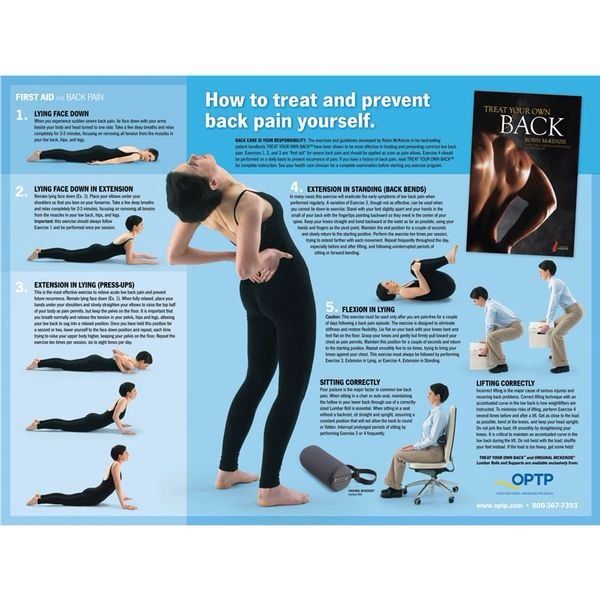
Manual therapy and treatments based on physical stimuli
The treatment options for sciatica following a slipped disc also include manual therapy and treatments based on physical stimuli. Manual treatment may include massages and special techniques for relaxing tense muscles or locked joints. Treatments based on physical stimuli use warming and cooling methods to relieve pain. These treatments are also called passive therapies because patients don’t have to actively participate. Common treatments include:
Massages: Various massage techniques are used to relax muscles and ease tension.
Heating and cooling: This includes the use of hot packs and heating patches, a hot bath, going to the sauna or using an infrared lamp. Heat can also help relax tense muscles. Cold packs, like cold wraps or gel packs, are also used to help soothe irritated nerves.
Ultrasound therapy: Here the lower back is treated with sound waves.
 The small vibrations that are produced generate heat and relax the body tissue.
The small vibrations that are produced generate heat and relax the body tissue.
There is no overall proof that passive treatments speed up recovery from a slipped disc or relieve the pain especially well. But many people find that heat or massages are pleasant and relaxing.
Traditional Asian medicine
Treatment approaches based on traditional Asian medicine include:
Acupuncture: In ´´acupuncture the therapist inserts fine needles into certain points on the body. This is thought to relieve the pain..
Reiki: Reiki is a Japanese treatment which aims to relieve pain by using specific hand placements.
Moxibustion: This method is used to heat specific points on the body by placing heated needles or glowing sticks made of mugwort (“Moxa”) close to those points.
There are very few good-quality studies on these treatments, and there is no proof that they help to relieve pain. Acupuncture is the only approach for which there is weak evidence that it might relieve pain – although this relief has been shown to be unrelated to where the needles are placed on the body.
Injections near the spine
Injection therapy mainly uses local anesthetics and/or inflammation-reducing medications like steroids. These drugs are injected into the area immediately surrounding the affected nerve root. There are different ways of doing this:
In lumbar spinal nerve analgesia, the medication is injected directly at the point where the nerve root leaves the spinal canal. This has a numbing effect on the nerve root.
In lumbar epidural analgesia, the medication is injected into what is known as the epidural space (“epidural injection”). The epidural space surrounds the spinal cord and the spinal fluid in the spinal canal. This is also where the nerve roots are located. During this treatment the spine is monitored using computer tomography or x-rays to make sure that the injection is placed at exactly the right spot.
Injections close to the spine can have side effects such as bleeding, infection and nerve damage.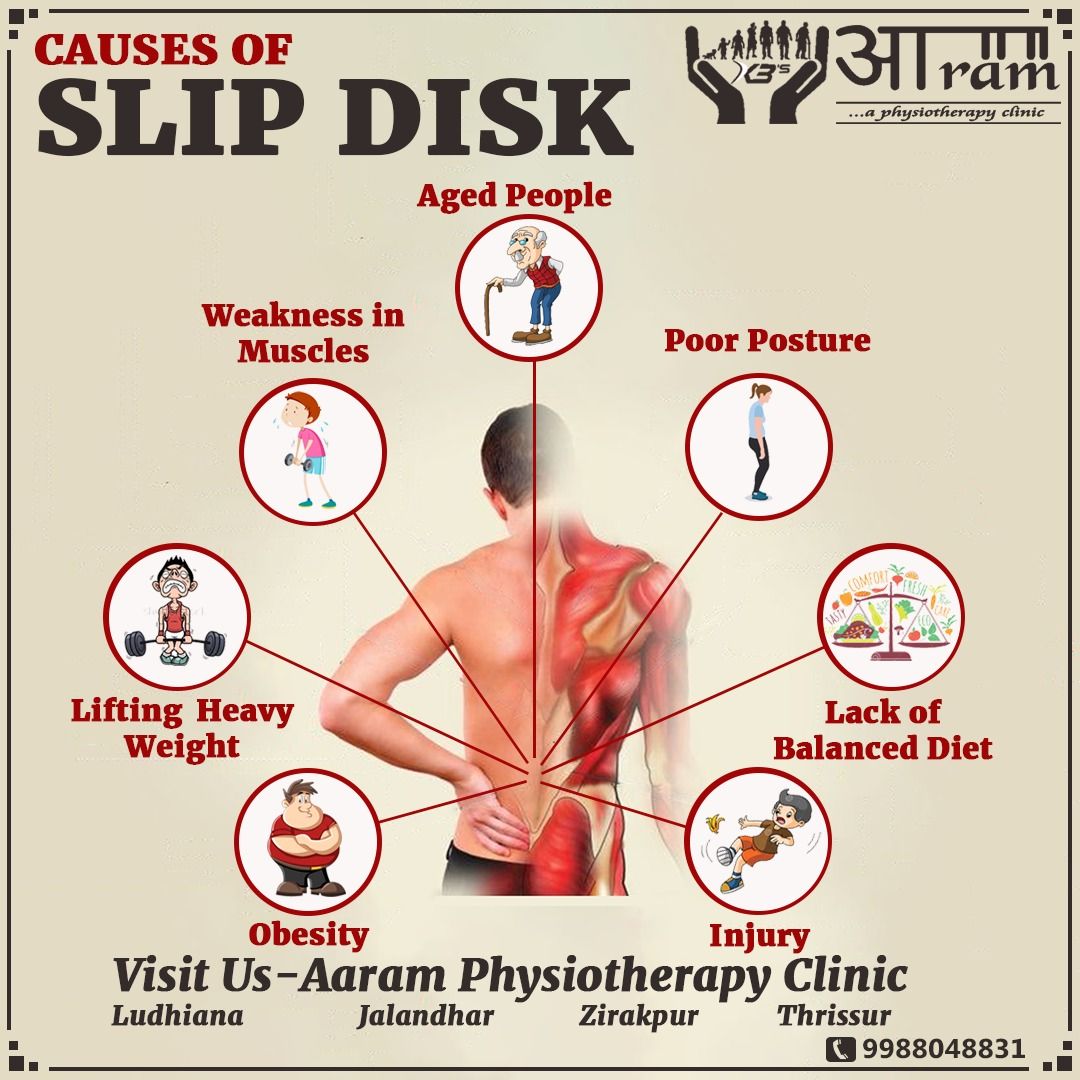 A treatment involving injections over a longer period of time may also lead to muscle weakness and is associated with radiation exposure due to the use of x-rays. For this reason, only a limited number of injections may be given. It is important to carefully weigh the pros and cons of having multiple injections.
A treatment involving injections over a longer period of time may also lead to muscle weakness and is associated with radiation exposure due to the use of x-rays. For this reason, only a limited number of injections may be given. It is important to carefully weigh the pros and cons of having multiple injections.
Studies on treatments with injections have shown that they are able to relieve sciatica for several weeks. People were able to move more easily while going about their day-to-day activities as a result. Steroid injections seem to be somewhat more effective than other types of injections.
Treating pain and staying active
Acute low back pain usually has no clear cause and goes away on its own after a few days. And even if a slipped disc is causing it, your body will probably be able to make the problem go away on its own within six weeks. Most treatments hardly affect the speed of recovery. Hot packs or massages might help you feel better. If you have severe pain, short-term relief can be provided by getting into a position that reduces the strain on your back and by using anti-inflammatory drugs or local anesthetics.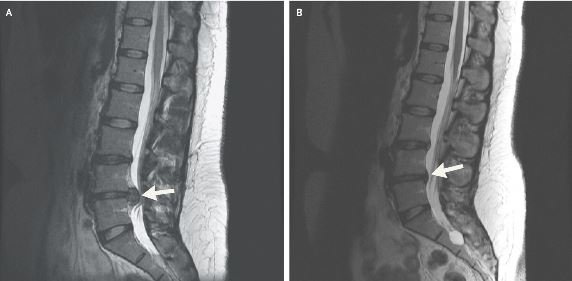 But most of the work is usually done by the body itself.
But most of the work is usually done by the body itself.
If slipped disc symptoms persist for a longer time, surgery may be an option to try to relieve the pressure on the affected nerve. However, most experts believe that slipped disc surgery is done more often in Germany than is actually necessary. So it might make sense to get a second opinion if your doctor advises you to have surgery and you aren’t sure whether this is the right treatment.
It is particularly important to stay as physically active as possible despite the pain. Exercise will not only keep your body in shape, it generally also has a positive effect on your mood. Getting enough exercise and keeping up the strength of your torso (core muscles) is key in order to stop back pain from becoming chronic. Physical activity has been scientifically proven to have a preventive effect – and it is probably the most important thing you can do to help yourself.
Sources
Bhatia A, Flamer D, Shah PS, Cohen SP.
 Transforaminal Epidural Steroid Injections for Treating Lumbosacral Radicular Pain from Herniated Intervertebral Discs: A Systematic Review and Meta-Analysis. Anesth Analg 2016; 122(3): 857-870. [PubMed: 26891397]
Transforaminal Epidural Steroid Injections for Treating Lumbosacral Radicular Pain from Herniated Intervertebral Discs: A Systematic Review and Meta-Analysis. Anesth Analg 2016; 122(3): 857-870. [PubMed: 26891397]Bundesärztekammer (BÄK), Kassenärztliche Bundesvereinigung (KBV), Arbeitsgemeinschaft der Wissenschaftlichen Medizinischen Fachgesellschaften (AWMF). Nationale Versorgungsleitlinie Nicht-spezifischer Kreuzschmerz. Langfassung. AWMF-Registernr.: nvl-007. 2017.
Jordan J, Konstantinou K, O’Dowd J. Herniated lumbar disc. BMJ Clin Evid 2011: pii: 1118.
Lee JH, Kim DH, Kim DH, Shin KH, Park SJ, Lee GJ et al. Comparison of Clinical Efficacy of Epidural Injection With or Without Steroid in Lumbosacral Disc Herniation: A Systematic Review and Meta-analysis. Pain Physician 2018; 21(5): 449-468. [PubMed: 30282390]
Lewis R, Williams N, Matar HE, Din N, Fitzsimmons D, Phillips C et al. The clinical effectiveness and cost-effectiveness of management strategies for sciatica: systematic review and economic model.
 Health Technol Assess 2011; 15(39): 1-578. [PMC free article: PMC4781007] [PubMed: 22078311]
Health Technol Assess 2011; 15(39): 1-578. [PMC free article: PMC4781007] [PubMed: 22078311]Li X, Han Y, Cui J, Yuan P, Di Z, Li L. Efficacy of Warm Needle Moxibustion on Lumbar Disc Herniation: A Meta-Analysis. J Evid Based Complementary Altern Med 2016; 21(4): 311-319. [PubMed: 26378088]
Pinto RZ, Maher CG, Ferreira ML, Ferreira PH, Hancock M, Oliveira VC et al. Drugs for relief of pain in patients with sciatica: systematic review and meta-analysis. BMJ 2012; 344: e497. [PMC free article: PMC3278391] [PubMed: 22331277]
Qin Z, Liu X, Wu J, Zhai Y, Liu Z. Effectiveness of Acupuncture for Treating Sciatica: A Systematic Review and Meta-Analysis. Evid Based Complement Alternat Med 2015: Article ID 425108. [PMC free article: PMC4631886] [PubMed: 26576192]
Rasmussen-Barr E, Held U, Grooten WJ, Roelofs PD, Koes BW, van Tulder MW et al. Nonsteroidal Anti-inflammatory Drugs for Sciatica: An Updated Cochrane Review. Spine 2017; 42(8): 586-594.
 [PubMed: 28399072]
[PubMed: 28399072]Rasmussen-Barr E, Held U, Grooten WJ, Roelofs PD, Koes BW, van Tulder MW et al. Non-steroidal anti-inflammatory drugs for sciatica. Cochrane Database Syst Rev 2016; (10): CD012382. [PMC free article: PMC6461200] [PubMed: 27743405]
Rubinstein SM, de Zoete A, van Middelkoop M, Assendelft WJ, de Boer MR, van Tulder MW. Benefits and harms of spinal manipulative therapy for the treatment of chronic low back pain: systematic review and meta-analysis of randomised controlled trials. BMJ 2019; 364: l689. [PMC free article: PMC6396088] [PubMed: 30867144]
Tang S, Mo Z, Zhang R. Acupuncture for lumbar disc herniation: a systematic review and meta-analysis. Acupunct Med 2018; 36(2): 62-70. [PubMed: 29496679]
IQWiG health information is written with the aim of helping
people understand the advantages and disadvantages of the main treatment options and health
care services.Because IQWiG is a German institute, some of the information provided here is specific to the
German health care system. The suitability of any of the described options in an individual
The suitability of any of the described options in an individual
case can be determined by talking to a doctor. We do not offer individual consultations.Our information is based on the results of good-quality studies. It is written by a
team of
health care professionals, scientists and editors, and reviewed by external experts. You can
find a detailed description of how our health information is produced and updated in
our methods.
!🥏 Sliding discs. How to work with gliding discs.
!🥏 Sliding discs. How to work with gliding discs.
Gliding discs are a special type of small piece of equipment that I use in my Pilates workouts. The basis of working with discs is the principle of sliding, which allows you to enhance the effect of the usual
exercises. By training with disks regularly, you get a simple and high-quality training that will help you work out problem areas on your legs, arms and stomach. Discs are effective for people of all skill levels, but because they are
additional equipment, the task of which is to increase the load due to friction, it is better to use them when the basic exercises become easy for you. Disc training will help increase endurance, flexibility, and develop balance.
Disc training will help increase endurance, flexibility, and develop balance.
and even recover from injuries.
The technical task of gliding discs is to ensure sliding on the floor during exercises based on arms or legs. During training with disks, you do not take your legs and arms off the floor surface, but slide along it, holding the weight of your
body. Being in contact with the unstable surface of the disk, the muscles work differently than during normal exercises with their own weight. To slide from one position to another, a person needs to maintain constant tension in the muscles
agonists, and stabilizers. When doing exercises, you put discs under your feet or palms and perform sliding movements forward, backward or sideways. Overcoming the force of friction with the floor surface, your muscles receive an additional load
along the entire trajectory. To maintain balance, the entire muscle corset is involved. If you are having trouble with your balance while exercising, you can hold on to a wall or a chair.
Modern sliding discs have two surfaces – one plastic, the other fabric. This allows a person to train on different floor coverings. The plastic surface glides perfectly on carpets and carpet, and the fabric surface glides on a hard surface.
(tile, laminate, parquet). Discs can be used in different workouts. In the fitness club, an experienced trainer can give you both an intensive cardio workout with discs and an interval workout with your own body weight. Also disks can be used when working out
any particular muscle group. Gliding discs are a great addition to any workout.
If you don’t have slip discs on hand, you can use any material that can slip on the floor, such as disposable paper or plastic plates, pieces of cloth, small towels, and even regular socks. Do you want to improve your body and
get rid of problem areas without boring monotonous exercises? You will definitely enjoy training with gliding discs!
Who invented gliding discs
Gliding discs have appeared recently. Gliding as a type of training was invented in America by fitness trainer and world champion aerobics Mindy Milrea, who wanted to create an effective training program, without jumping and impact loads.
Gliding as a type of training was invented in America by fitness trainer and world champion aerobics Mindy Milrea, who wanted to create an effective training program, without jumping and impact loads.
As a mother of three active sons, she was looking for versatile equipment that can be used to keep fit in the most comfortable conditions, namely, to train on her own at home and use improvised means, without
working with a trainer and visiting a fitness club.
Pictured: Mindy Mylrea
Mindy has been developing a set of exercises with discs for five years, and as a result, she managed to prove the high effectiveness of such fitness equipment. In 2004, she patented a new type of sports training that appealed to both beginners,
as well as professionals.
Initially, these were not the disks we see them now, but ordinary disposable plates. Mindy also recommended using any means at hand – kitchen towels and just sliding objects. Now there are many modifications of gliding discs,
Now there are many modifications of gliding discs,
made of special synthetic sliding materials that can be used on any surface. Also there are discs made of pressed paper. They are not expensive and less durable, but they train muscles no worse than professional ones. original gliding
discs are round, 22 cm in diameter and 1 cm high. There are many cheaper analogues now, so it is not necessary to purchase original discs, the cost of which, of course, is higher.
Disc training helps people recover from injuries and complex surgeries. They are also effective for weight loss.
How to choose discs for yourself
Sliding discs come in various shapes – round oval and even triangular. The shape of the discs does not affect the functionality and quality of the workout, so choose the ones that you like best. I spend training with round. As for the material of manufacture,
everything depends on
manufacturer and cost. The more well-known the name of the manufacturer’s company and the better the material, the higher the cost and the longer the service life. But this does not mean that cheaper counterparts can last less. As I wrote above, you can use in your
But this does not mean that cheaper counterparts can last less. As I wrote above, you can use in your
workouts even disposable plates, just change them more often.
Quality gliding discs are durable and easy to clean. Even with active use, they will be able to retain their original appearance for a long time. They are small, compact and lightweight, you can buy them for yourself and take them with you on vacation or for training on
nature to keep in shape when it is not possible to visit a fitness club. Discs will be a great gift for anyone who loves fitness.
You can buy sliding discs at any sports shop. This is a common type of sports equipment, so finding it is not difficult. For myself, I buy wheels on Aliexpress. Although the delivery takes several weeks, it is still very convenient, because
There is just an incredibly huge selection of shapes and colors. The price of gliding discs ranges from $2 to $10 on average.
What effect will you get from training with discs
During training, the discs should be placed under the legs or arms. Depends on what exercises you plan to do. Thanks to sliding, the usual movements will be more difficult for you. You will receive a uniform physical load on all muscle groups. In addition to strengthening muscles
Depends on what exercises you plan to do. Thanks to sliding, the usual movements will be more difficult for you. You will receive a uniform physical load on all muscle groups. In addition to strengthening muscles
gliding exercises perfectly develop joints in all planes, which is the prevention of many joint diseases.
If you are new to gliding, keep a chair handy for support at first. Most disc exercises have a wide range of motion, so make sure you have enough space around you.
Disc training will help strengthen and stretch muscle fibers, work out small stabilizing muscles, improve balance and focus, which is required for the correct execution of movements. Discs will be indispensable in recovery training after injury or joint pain.
Use disks in training with children. They will be useful for the development of endurance, motor skills and coordination in a child.
Gliding disc exercises take some getting used to, however advanced athletes can use two pairs at the same time – one for the arms and one for the legs.
See these videos for examples of disc training:
Gliding will appeal to anyone looking for an effective, varied and low impact workout for the whole body. Regular gliding exercises will help you get a toned and lean body in a short time without the use of complex or expensive equipment.
Benefits and contraindications in the use of disks:
Gliding workouts will help you work out problem areas: tighten your stomach, waist, outer and inner thighs and buttocks. Due to the additional grip on the surface when sliding, you get a higher load on the muscles, which means you will have a workout
more effective. Disc workouts are low impact and gentle on the joints. The discs force the muscles to work differently than when working with their own weight. However, as with most other types of exercise, training with gliding discs also has its contraindications.
Before using the discs, I recommend consulting with your doctor.
Gliding training will be useful for you if:
- are indispensable for recovery from injuries;
- develop balance, flexibility and cardio activity;
- discs are compact, you can take with you anywhere;
- allow you to complicate training;
- are safe for the musculoskeletal system;
Consultation with a doctor for classes is necessary if:
- there are chronic joint problems;
- knee injuries;
- obesity and varicose veins;
- to train in the postoperative period;
- to use in diseases of the cardiovascular system;
When I was preparing this article, I wanted to give a lot of useful information. If I succeeded, I will be glad for your subscription to my Instagram)
If I succeeded, I will be glad for your subscription to my Instagram)
- I don’t want, I won’t):
- I’m smart, subscribed 🙂
WANT TO LEARN TO WORK WITH SLIDING DISCS?
In our online school we will teach you how to work with “Pilates discs” and issue a coaching certificate
Workshop: “Working with discs for sliding”
Duration 80 minutes
- Theoretical and practical part
- Permanent access to session records
- Personal consultations with a methodologist
- Post training support
- We send the certificate immediately
- Training music as a gift
- 750 UAH
BUY
- UAH
- USD
- EUR
Hello, I’m Olga:)
How can I help you?
ALL PILATES COURSES:
Check out our other educational courses
Online Course:
Pilates Instructor MAT1, MAT2
150.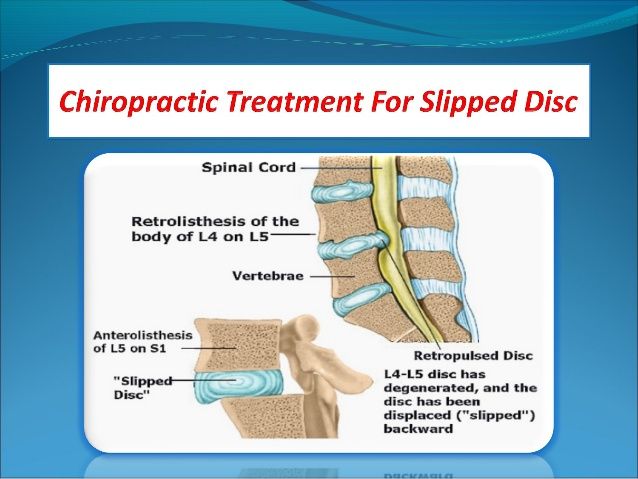 00 USD Read more
00 USD Read more
Online Course:
Pilates Instructor (all inclusive)
$272.00 Read more
Online course:
Nutrition for the trainer
USD 49.00 Read more
Personal training
Online
9011 2 16.00 USD More
Workshop:
Isotonic Exercises ring
$19.00 More details
Workshop:
Pilates for kids
$22.00 More details
Workshop:
Pilates during pregnancy
USD 19.00 Read more
Workshop:
Teaching Basics of Stretching
USD 19.00 Read more
Workshop: 9005 3
Work with equipment – “mini ball”
19.00 USD Read more
Workshop:
Work with equipment – “Fitball”
19.00 USD More details
Workshop:
Work with equipment – “foam roller”
9 0112 19.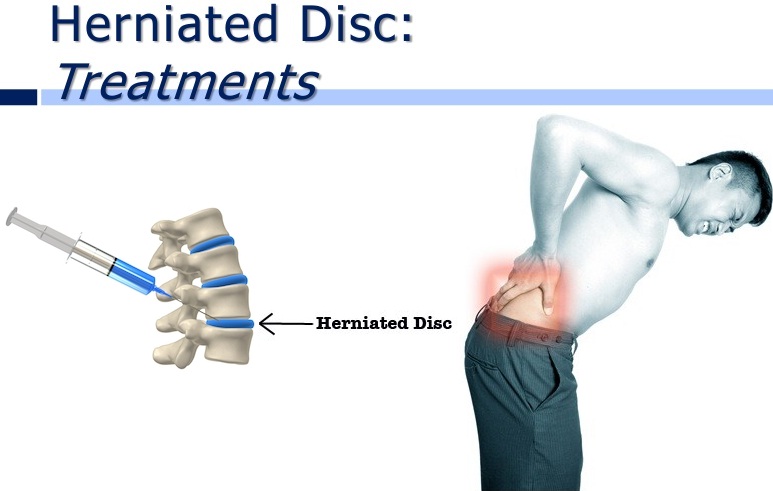 00 USD Details
00 USD Details
Workshop:
Work with rubber buffer”
USD 19.00 More details
Workshop:
Work with elastic band
1 $9.00 More details
Workshop:
Working with slide discs
USD 19.00 Read more
Workshop:
Breathing biomechanics restoration
USD 19.00 Read more
ONLINE COURSES BY OUR PARTNERS
Check out the courses of our partners in other categories
Exercise therapy for children from A to Z
Natalia Shevchenko
90.00 USD
Hallux valgus and flat feet. Restoration of feet without surgery.
Natalya Shevchenko
USD 35.00
Training in Japanese head and face massage Korugi
Elena Kutas
$250. 00
00
Traditional Thai massage
Inna Obernikhina
150.00 USD
Facebook building – perfect face without beauticians
Marina Boronos
100.00 USD
Cosmetologist from scratch!
Valeria Kosova
350.00 USD
Slipping of the vertebrae (listhesis) – Avicenna Klinik
- Start page
- Diseases of the spine
- Slipping of the vertebrae (listhesis)
When the vertebrae “disturb the general order”
9 0002 Vertebral slippage, also known as spondylolisthesis, is the sliding of a vertebral body together with its root of the arc, transverse processes and superior articular processes. In this case, the segment above the next deeper vertebra may slide forward (anterolisthesis) or backward (retrolisthesis). This leads to spinal instability and often back pain, often radiating to the legs. The 5th lumbar vertebra is affected most often (80%), the 4th lumbar vertebra is the second most common problem (15%). More than half of all patients have atypical/unclear symptoms for a long time, so only an accurate diagnosis can clarify the situation. In about 2-4% of cases, slippage of the vertebrae remains without complaints and therefore unnoticed.
In this case, the segment above the next deeper vertebra may slide forward (anterolisthesis) or backward (retrolisthesis). This leads to spinal instability and often back pain, often radiating to the legs. The 5th lumbar vertebra is affected most often (80%), the 4th lumbar vertebra is the second most common problem (15%). More than half of all patients have atypical/unclear symptoms for a long time, so only an accurate diagnosis can clarify the situation. In about 2-4% of cases, slippage of the vertebrae remains without complaints and therefore unnoticed.
Symptoms of slipping of the vertebrae
Development from grades 1 to 4 is usually slow. Only in rare cases can a sudden deterioration occur. However, as a rule, at an advanced stage, there are pain during exertion and constant pain. Depending on the degree of slippage over time, one or more nerves may be pinched and stretched in the spinal canal/vertebral canal. This can lead to nerve damage, up to and including functional failure. This, in turn, can lead to paralysis, which affects both the legs and bladder and bowel function. This wears out the intervertebral discs (herniated disc) and the spinal joint (spondylarthrosis), which can sometimes cause severe pain. It is not uncommon for patients to also experience tingling, numbness, and/or weakness.
This, in turn, can lead to paralysis, which affects both the legs and bladder and bowel function. This wears out the intervertebral discs (herniated disc) and the spinal joint (spondylarthrosis), which can sometimes cause severe pain. It is not uncommon for patients to also experience tingling, numbness, and/or weakness.
Causes of slipping of the vertebrae
Normally, the spine forms a uniform, slightly S-shaped curve to which all of its components adapt. In the case of so-called sliding vertebrae, one or more vertebrae slip out of their normal position.
This instability can have various causes: on the one hand, congenital deformities of the spine cause the vertebrae to slip out of their usual position. On the other hand, gradual age-related changes, such as wear and tear, bone destruction or previous fractures, most often lead to the phenomenon of slipping vertebrae. Age-related changes in the intervertebral discs, as well as wear and tear of the vertebral bodies, are the most common causes of vertebral slip.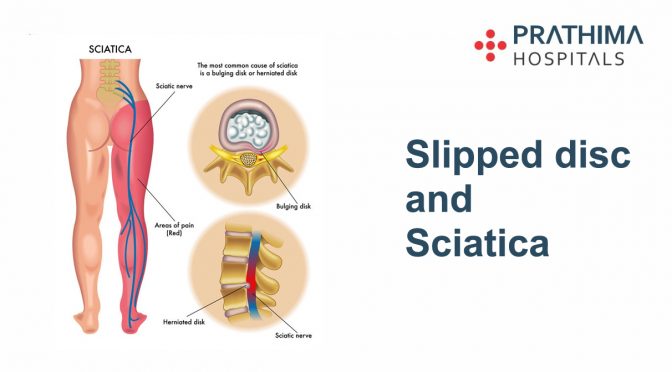 People aged 50-60 are most often affected. Because over the years, the intervertebral discs, which are located between the individual vertebrae as shock absorbers, lose fluid and, consequently, their volume. They shrink more and more, stand tighter, tendons and ligaments weaken. As a result, segments of the spine become unstable. The individual vertebra is no longer held and can more easily slide out of the existing structure. Well-trained ligaments, muscles, and tendons slow down displacement as they provide additional stability.
People aged 50-60 are most often affected. Because over the years, the intervertebral discs, which are located between the individual vertebrae as shock absorbers, lose fluid and, consequently, their volume. They shrink more and more, stand tighter, tendons and ligaments weaken. As a result, segments of the spine become unstable. The individual vertebra is no longer held and can more easily slide out of the existing structure. Well-trained ligaments, muscles, and tendons slow down displacement as they provide additional stability.
In some cases, listhesis can also be caused by excessive stress on the spine in high performance sports. Rhythmic gymnastics, pole vaulters or dolphin swimmers are especially at risk here. Serious injuries such as car accidents can also seriously affect the stability of the spine and cause the vertebrae to slip.
Fundamentally, there are four degrees of severity of sliding of the vertebrae (Meyerding classification):
- Grade 1: offset less than 25%
- Grade 2: offset 25 – 50%
- Grade 3: offset 5 1 – 75%
- Degree 4: offset over 75%
Diagnosis slipping of the vertebrae
An x-ray already clearly shows when a vertebra has slipped.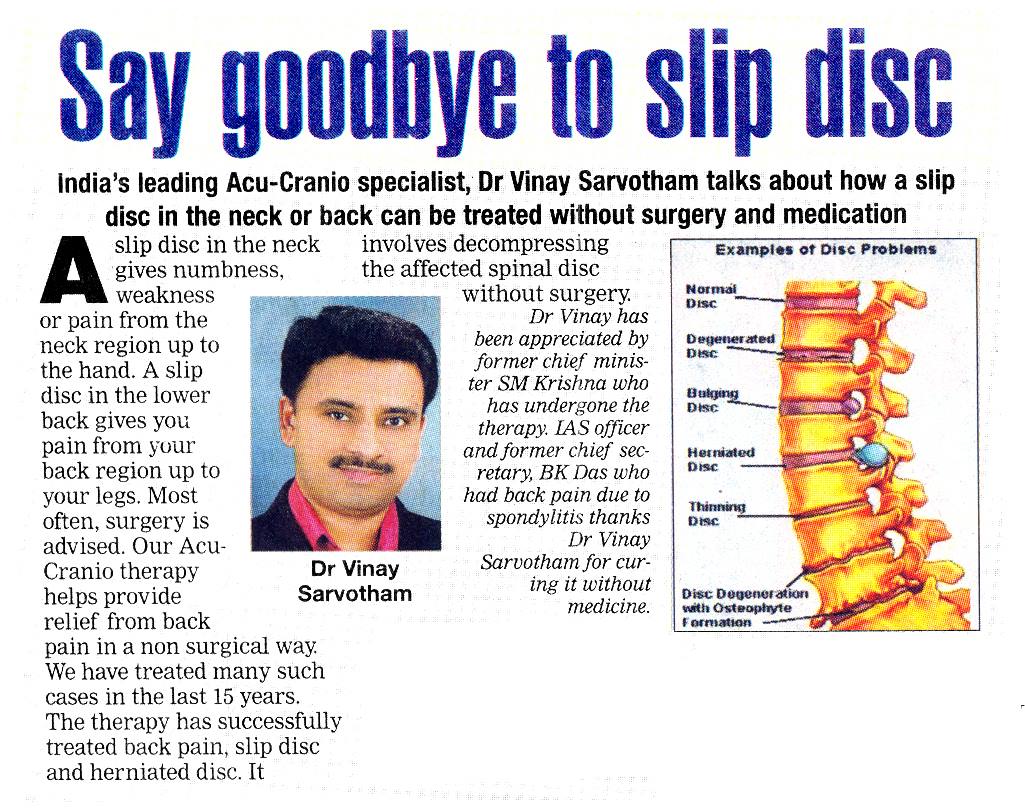 However, what looks so impressive in the picture is often just a random find. If the slipped vertebra does not press on the nerve or directly on the intervertebral disc, the disease proceeds largely without pain and symptoms. But it can also lead to chronic, deep-seated low back pain (LBP), and especially with further damage to the spine (including SP) and intervertebral discs. Therefore, for accurate diagnosis, a whole package of measures is needed. In the first place, of course, is a detailed conversation with the patient (anamnesis). Here the doctor asks in particular detail about the usual loads or specific sports. A thorough examination of the spine includes a conclusion about the patient’s posture, the stage of formation of periostosis of the lumbar spine (POP), an assessment of the condition of the pelvis and pain intensity.
However, what looks so impressive in the picture is often just a random find. If the slipped vertebra does not press on the nerve or directly on the intervertebral disc, the disease proceeds largely without pain and symptoms. But it can also lead to chronic, deep-seated low back pain (LBP), and especially with further damage to the spine (including SP) and intervertebral discs. Therefore, for accurate diagnosis, a whole package of measures is needed. In the first place, of course, is a detailed conversation with the patient (anamnesis). Here the doctor asks in particular detail about the usual loads or specific sports. A thorough examination of the spine includes a conclusion about the patient’s posture, the stage of formation of periostosis of the lumbar spine (POP), an assessment of the condition of the pelvis and pain intensity.
Functional and pain testing, CT or MRI diagnostics, spinal measurement, electromyography (EMG) and discography complete the picture for an accurate diagnosis of spinal slip.
Treatment of slipped vertebrae
In some cases, conservative therapeutic treatment is sufficient to relieve the condition caused by slipping of the vertebrae. In addition to pain management, we focus on spinal stabilization. As part of the physiotherapy treatment, we strengthen the muscles or the patient temporarily receives a corset that keeps the back in the correct position. However, conservative therapy is not able to treat the cause of the disease (slip of the vertebrae).
If discomfort and pain have been present for a long time and there is already a loss of functions, then with the help of an operation (spinal fusion – blocking or immobilization) it is possible to achieve permanent stabilization of the affected vertebral segments. With this surgical method, we not only stabilize the joint, but also eliminate the resulting narrowing, correct the position of slipped vertebrae (reposition) and release pinched nerves (decompression).
Spinal blocking is performed using titanium elements to stabilize weak areas. During surgery under general anesthesia, the screws are inserted into the vertebral bodies and fixed with fasteners.
During surgery under general anesthesia, the screws are inserted into the vertebral bodies and fixed with fasteners.
Sometimes it is necessary to replace damaged intervertebral discs with bone blocks, titanium structures or plastic implants. In case of slippage of the vertebrae (listhesis), we first correct the spinal segment and then fix it in the same operating session. A few months after the procedure, the vertebral joints fuse with the inserted blocks or bone implants. Thus, the rigidity of the affected area is achieved.
This eliminates weakness and relieves pain significantly. Only then is there again an opportunity for conservative therapy to strengthen the back muscles. Of course, after such a procedure, patients can continue to perform all the desired movements of the back, often even better than before.
Author
Dr. honey. Munter Sabarini
Specialist, neurosurgery
Avicenna Klinik Berlin will be happy to help you
Go to Google Maps
Since 2001, the Avicenna Klinik has been located in Berlin.

 In some cases NSAIDs cause stomach ulcers, too. NSAIDs may also impair the function of the kidneys. If you have asthma, a cardiovascular disease, or a stomach ulcer, you should ask your doctor for advice before taking NSAIDs. NSAIDs can also be injected into muscle tissue, although that is generally not done anymore nowadays. NSAID injections probably don’t have any advantages over tablets or suppositories, but they may cause nerve damage, bleeding or inflammation at the site of injection.
In some cases NSAIDs cause stomach ulcers, too. NSAIDs may also impair the function of the kidneys. If you have asthma, a cardiovascular disease, or a stomach ulcer, you should ask your doctor for advice before taking NSAIDs. NSAIDs can also be injected into muscle tissue, although that is generally not done anymore nowadays. NSAID injections probably don’t have any advantages over tablets or suppositories, but they may cause nerve damage, bleeding or inflammation at the site of injection.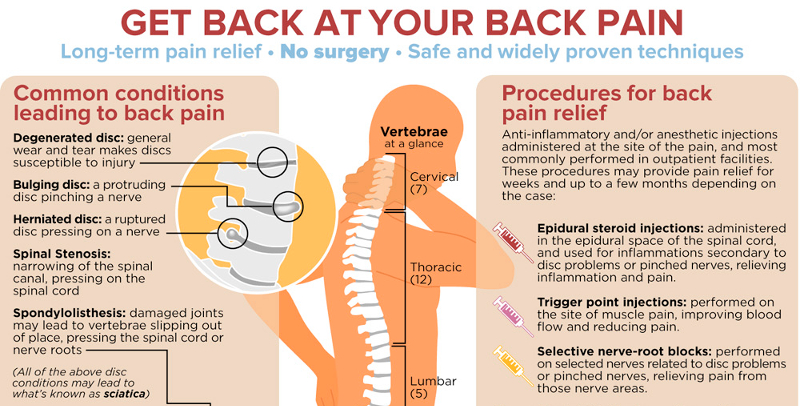 This is the amount in, for example, 8 tablets containing 500 milligrams each. It is not only important to take the right dose, but also to wait long enough between doses.
This is the amount in, for example, 8 tablets containing 500 milligrams each. It is not only important to take the right dose, but also to wait long enough between doses. This happens when it is taken as a tablet, injected into a muscle or given through a drip (infusion).Systemic steroids can soothe inflammation and relieve pain. They can also increase the risk of certain medical problems, including stomach ulcers, osteoporosis, infections, skin problems, glaucoma and glucose metabolism disorders.
This happens when it is taken as a tablet, injected into a muscle or given through a drip (infusion).Systemic steroids can soothe inflammation and relieve pain. They can also increase the risk of certain medical problems, including stomach ulcers, osteoporosis, infections, skin problems, glaucoma and glucose metabolism disorders.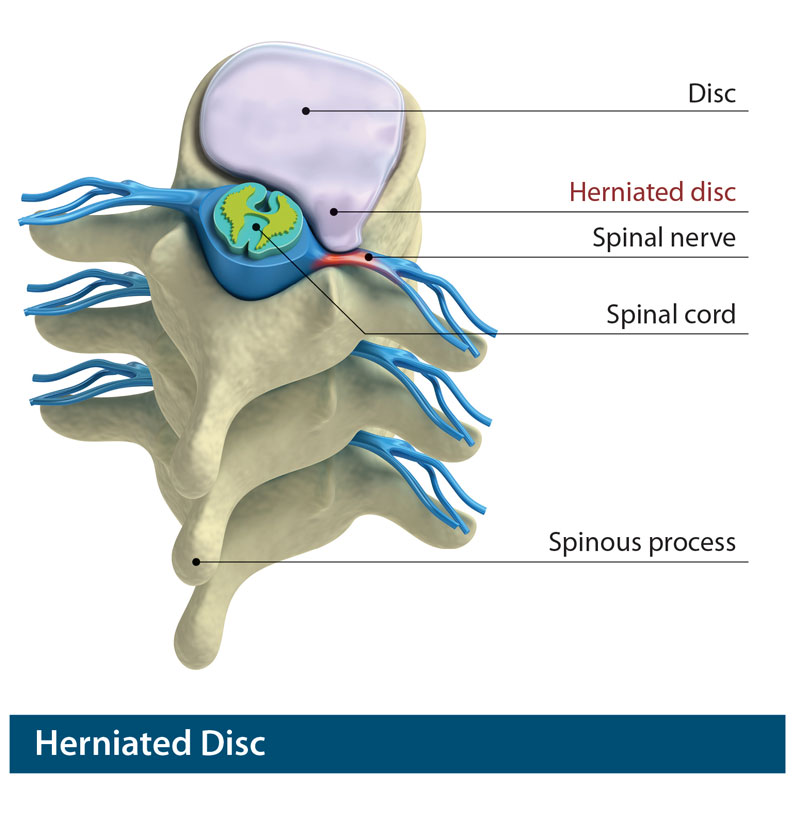 Heat can also help relax tense muscles. Cold packs, like cold wraps or gel packs, are also used to help soothe irritated nerves.
Heat can also help relax tense muscles. Cold packs, like cold wraps or gel packs, are also used to help soothe irritated nerves.
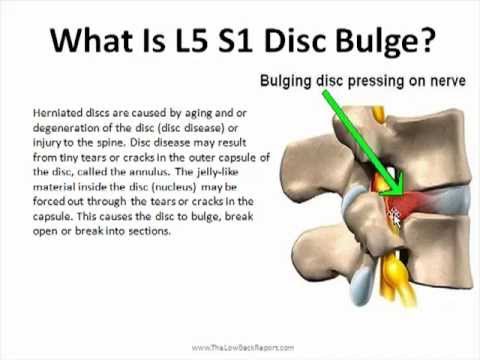 This is also where the nerve roots are located. During this treatment the spine is monitored using computer tomography or x-rays to make sure that the injection is placed at exactly the right spot.
This is also where the nerve roots are located. During this treatment the spine is monitored using computer tomography or x-rays to make sure that the injection is placed at exactly the right spot.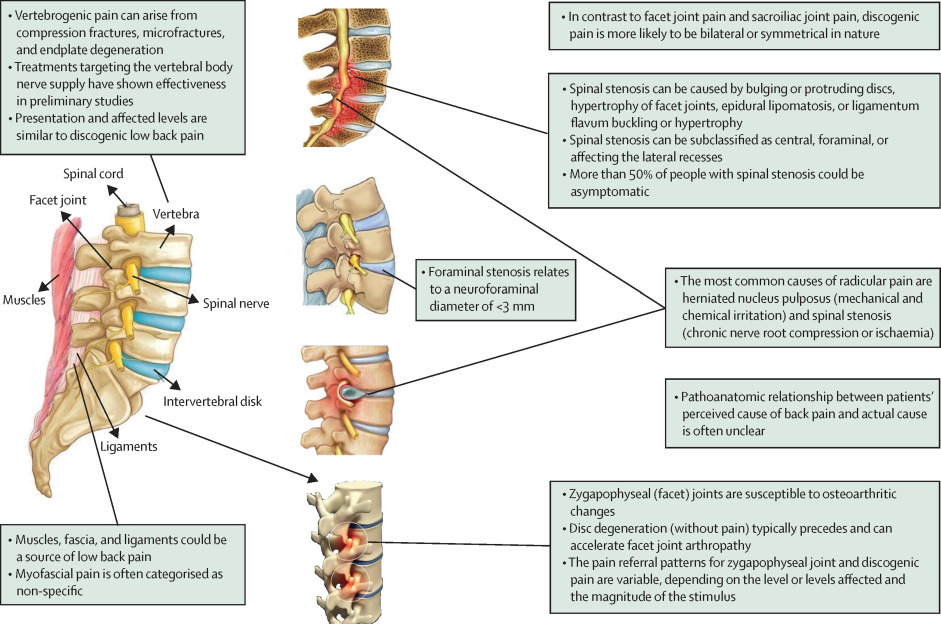 Comparison of Clinical Efficacy of Epidural Injection With or Without Steroid in Lumbosacral Disc Herniation: A Systematic Review and Meta-analysis. Pain Physician 2018; 21(5): 449-468. [PubMed: 30282390]
Comparison of Clinical Efficacy of Epidural Injection With or Without Steroid in Lumbosacral Disc Herniation: A Systematic Review and Meta-analysis. Pain Physician 2018; 21(5): 449-468. [PubMed: 30282390] Effectiveness of Acupuncture for Treating Sciatica: A Systematic Review and Meta-Analysis. Evid Based Complement Alternat Med 2015: Article ID 425108. [PMC free article: PMC4631886] [PubMed: 26576192]
Effectiveness of Acupuncture for Treating Sciatica: A Systematic Review and Meta-Analysis. Evid Based Complement Alternat Med 2015: Article ID 425108. [PMC free article: PMC4631886] [PubMed: 26576192] Acupuncture for lumbar disc herniation: a systematic review and meta-analysis. Acupunct Med 2018; 36(2): 62-70. [PubMed: 29496679]
Acupuncture for lumbar disc herniation: a systematic review and meta-analysis. Acupunct Med 2018; 36(2): 62-70. [PubMed: 29496679] NSAIDs can also be injected into muscle tissue, although that is generally not done anymore nowadays. NSAID injections probably don’t have any advantages over tablets or suppositories, but they may cause nerve damage, bleeding or inflammation at the site of injection.
NSAIDs can also be injected into muscle tissue, although that is generally not done anymore nowadays. NSAID injections probably don’t have any advantages over tablets or suppositories, but they may cause nerve damage, bleeding or inflammation at the site of injection.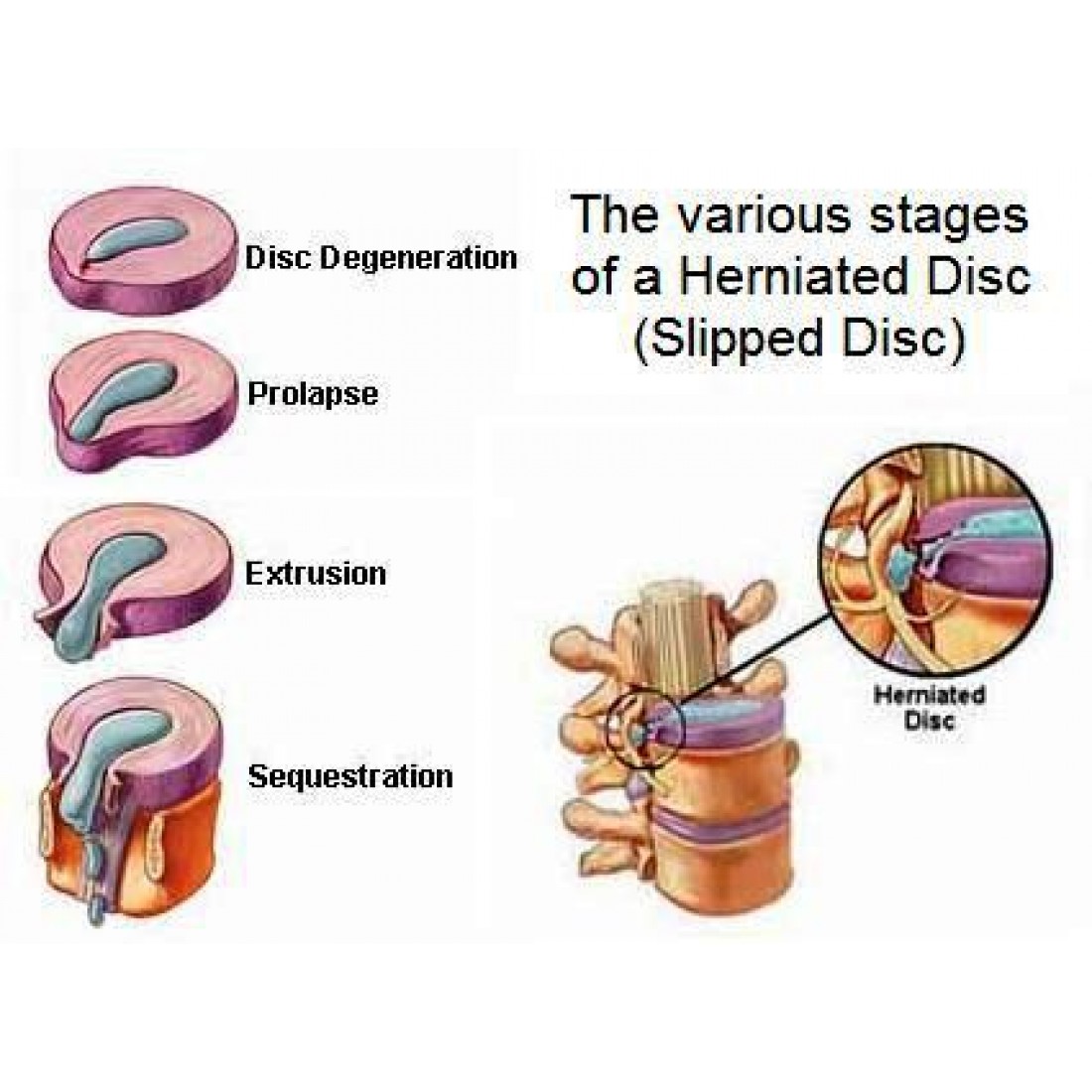
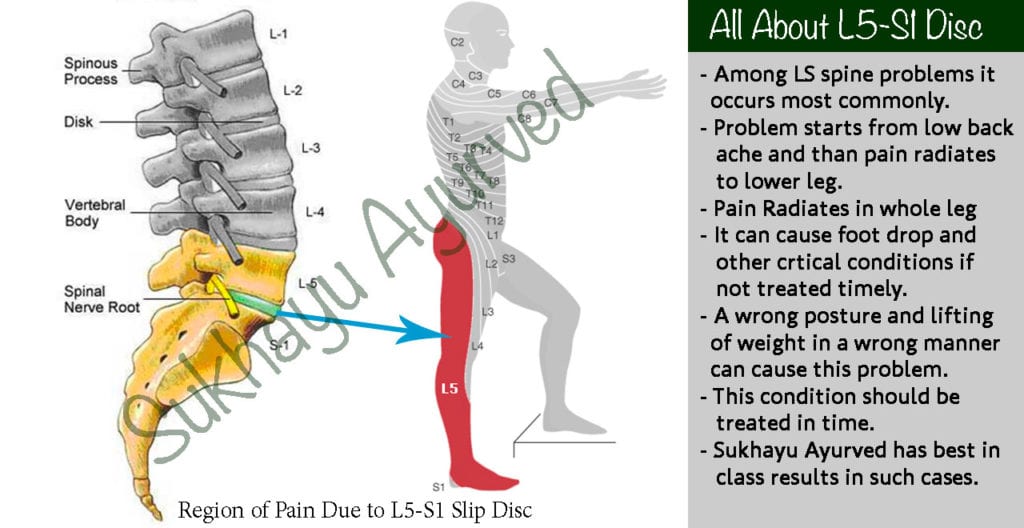 The small vibrations that are produced generate heat and relax the body tissue.
The small vibrations that are produced generate heat and relax the body tissue. Transforaminal Epidural Steroid Injections for Treating Lumbosacral Radicular Pain from Herniated Intervertebral Discs: A Systematic Review and Meta-Analysis. Anesth Analg 2016; 122(3): 857-870. [PubMed: 26891397]
Transforaminal Epidural Steroid Injections for Treating Lumbosacral Radicular Pain from Herniated Intervertebral Discs: A Systematic Review and Meta-Analysis. Anesth Analg 2016; 122(3): 857-870. [PubMed: 26891397] Health Technol Assess 2011; 15(39): 1-578. [PMC free article: PMC4781007] [PubMed: 22078311]
Health Technol Assess 2011; 15(39): 1-578. [PMC free article: PMC4781007] [PubMed: 22078311] [PubMed: 28399072]
[PubMed: 28399072] The suitability of any of the described options in an individual
The suitability of any of the described options in an individual